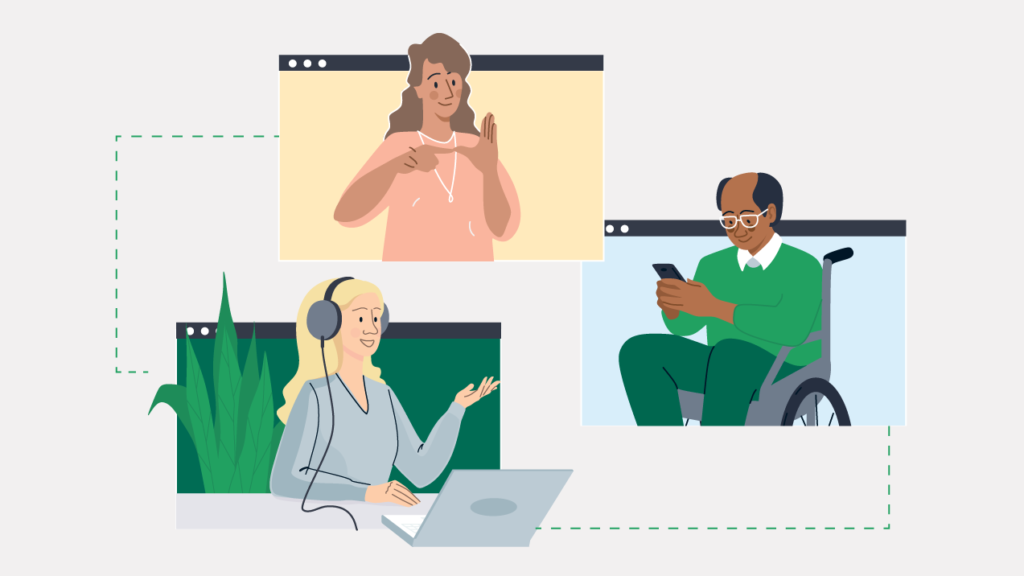With the increasing number of migrants coming to Australia, there is a greater need for medical practices to cater to those patients who aren’t native English speakers. Yet, how can this be done? How do you not only welcome these individuals, but also communicate important diagnostic information to someone who may not understand English well? Read on to learn our suggestions for bridging the language barrier.
1. Make Your Website Available in Different Languages
While initially this step may seem overwhelming, we’ve got great news for you — it’s easy! With Google Translate, you can add automatic translations to your website in over 100 languages. The process is a fairly simply one, but if you run into any issues, don’t hesitate to contact your IT provider. They should have no problem implementing this feature.
2. Employ Bilingual Reception Staff
If you tend to have many patients who speak a language other than English, you may want to consider employing receptionists who are bilingual. While obviously you aren’t going to find staff members who speak every possible language clients might use, it may be worth your while to hire receptionists who speak Arabic, for example, if you tend to have many clients who are native Arabic speakers.
3. Send Recalls in Different Languages
At HotDoc, we offer clinics the ability to send health updates and appointment reminders through our SMART Recalls and SMART Reminders services. Better still, these recalls and reminders can be sent in different languages, making it easy for you to communicate with clients who aren’t native English speakers.

To use this functionality, we recommend you ask patients which language they’d prefer to receive health reminders in. Then, group patients by their preferred language when creating and sending your templates. For a free demo of how to do this, give us a call at 1300 468 362. We’ll be happy to help you get this set up.
4. Create Paperwork in Multiple Languages
If you tend to have a number of clients who don’t speak English, it may be a good idea to create your most commonly used forms and pamphlets in multiple languages. If there are only 2 primary languages used in your practice, you could even include both languages on the same form. While this may seem expensive, you’ll find many affordable online translation services by searching Google.
5. Use Diagrams, Drawings and Models
Have you ever heard the phrase, ‘A picture is worth 1,000 words’? Diagrams, drawings, and models can help you communicate more easily with non-native English speakers. Consider using lots of imagery in the brochures, posters, and leaflets you create. Likewise, encourage doctors to pull up images from Google Images when they’re offering explanations to patients.
6. Regularly Check for Understanding
Have you ever politely nodded at someone when you had no idea what they were talking about? Alternatively, have you ever answered ‘yes’ to someone just so you could get away from them? We’re all guilty of these behaviours. Consider the notion that your patients may be behaving similarly due to a lack of understanding or rapport.
To prevent these scenarios, take time to make sure your patients feel comfortable with you so they’re less likely to merely nod and agree. Additionally, ask questions throughout the appointment to see if you’re speaking slowly enough, if clarification on a topic is required, and to confirm that they truly understand what you’ve said.
7. Rephrase and Repeat Information
Your patients may have a good grasp of English but falter when it comes to slang, jargon, technical language, idioms, metaphors, and acronyms. As such, you should avoid using them. Also, be aware that rephrasing a question can aid understanding.
For instance, if you ask a patient, ‘Did your parents have any cardiac issues at a young age?’ the patient might understand everything except the word ‘cardiac’. As a follow-up, you might then say, ‘Did your parents have heart problems when they were children or teenagers’?
Lastly, you’re going to want to make an effort to offer very clear explanations to patients to make sure they fully understand your instructions. For example, the phrase, ‘take until finished’, may be misinterpreted as ‘take until you feel better’, rather than ‘take until all the tablets are finished’.

8. Enroll in a Cultural Course
If many of your patients have a particular ethnicity, you might want to consider taking a course related to their culture, so you can be aware of various cultural nuances. For example, a course could provide information about:
• Preferred personal space/standing distance
• Whether direct eye contact is appropriate
• Common hand gestures
• Which person to address in a group
• Words, facial expressions and tones to avoid
9. Phone Interpreter
If you are really struggling to communicate with someone, a phone interpreter can be a lifesaver. This being the medical field, we mean that literally! However, be cognizant of the fact that typically, interpreters charge for a minimum of 30 minutes and need to be booked in advance.
To find an interpreter, you may want to consider the Australian government’s service which can be reached at 1800 131 450. The service has 24-hour availability and provides immediate translation services in 54 languages. However, before picking up the phone, make sure you register first for ATIS (Automated Telephone Interpreting Service). Registration is required.



